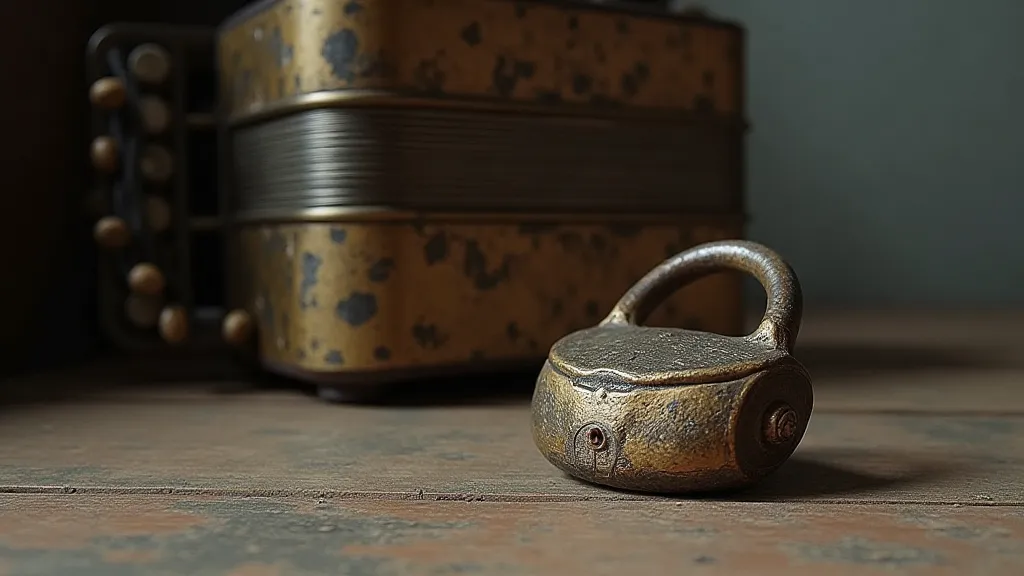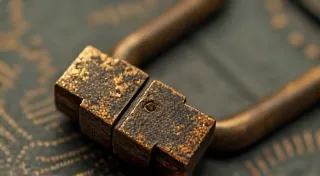The Cipher of Trust: How Vulnerability Shapes Security
There's a quiet beauty in things that reveal their secrets. Not through force, but through understanding. I think of this often when I think about antique accordions – instruments that have weathered decades, sometimes centuries, bearing witness to countless stories. Each bellows fold, each meticulously crafted key, tells a tale of craftsmanship, resilience, and ultimately, the passage of time. And that same principle, that same understanding of underlying mechanisms, applies to something seemingly far removed from music: the art of lock picking.
My grandfather, a clockmaker, always said, "Everything is a puzzle, Thomas. The trick isn't brute force, but observing, feeling, listening to the whispers of its workings." He wasn’t talking about a lock, but the sentiment resonated deeply. He's the one who first showed me the delicate machinery of a grandfather clock, patiently explaining how each gear, each spring, contributed to the grand, rhythmic ticking. It was a lesson in appreciating complexity, and it inadvertently planted a seed for my later interest in the less conventionally understood aspects of security.

The Paradox of Security
We often perceive security as absolute, as an impenetrable barrier against threat. But the reality is far more nuanced. True security isn't about creating something invincible; it’s about acknowledging and mitigating vulnerability. Think about the architecture of a medieval castle. Massive stone walls were impressive, certainly, but they also had gatehouses, sally ports, and hidden passages – points of potential weakness that required constant vigilance and ingenious design to counter. The very existence of defenses implies an awareness of potential attack.
Lock picking, at its core, is an exploration of those vulnerabilities. It's not about malicious intent; it's about demonstrating an understanding of how a seemingly secure system can be bypassed. It's a direct manifestation of the paradox: the closer you look at a system, the more you see its potential flaws. This is why ethical considerations are paramount in this pursuit. We're not breaking into things; we're demonstrating a pathway, a vulnerability that can be addressed by those responsible for security.
The Craft and the Cipher
The tools themselves are surprisingly simple: tension wrenches, picks, and a keen eye. But the skill lies in the feeling, the delicate dance between pressure and manipulation. It’s not about forcing a pin; it's about feeling its subtle movements, understanding how the internal mechanisms interact. Each lock is a unique cipher, a challenge to be deciphered.
There’s a profound beauty in the craftsmanship of older locks – the precision of the machining, the quality of the materials. A well-made pin tumbler lock from the 1920s, for example, is a testament to a time when things were built to last. Contrast that with many modern, mass-produced locks, which prioritize cost-effectiveness over durability. This isn’t to say that modern security is inherently flawed; it's simply a reflection of evolving priorities. But understanding the principles behind older mechanisms provides a deeper appreciation for the underlying concepts of security.
The feeling when a lock yields isn't one of triumph, but of revelation. It's the moment when the cipher is broken, and the workings of the system are laid bare. And with that understanding comes a responsibility – the responsibility to share that knowledge ethically and constructively.
More Than Just a Hobby: Ethical Considerations
It's crucial to reiterate: lock picking should *never* be used for illegal purposes. The pursuit of this knowledge is purely for educational and recreational value. Demonstrating vulnerabilities is a way to highlight the importance of robust security practices. It encourages designers and manufacturers to improve their systems and raises awareness among users.
The act of restoring an antique accordion shares a similar ethos. You're not simply repairing an object; you’re preserving a piece of history, bringing it back to life. You're understanding its construction, appreciating its craftsmanship, and ensuring that it can continue to be enjoyed for generations to come. Similarly, understanding the mechanics of a lock allows us to appreciate the effort and ingenuity that went into its design, and to contribute to a more informed discussion about security.

Collecting and Preservation
For those interested in the world of locks, collecting antique mechanisms can be a rewarding hobby. It's not just about acquiring objects; it’s about delving into history, understanding evolving security practices, and preserving a tangible link to the past.
Condition is key in collecting. Locks, like accordions, are susceptible to the ravages of time. Rust, corrosion, and broken components can significantly impact their value and functionality. Learning basic restoration techniques – cleaning, lubrication, and component replacement – can be a rewarding way to preserve these historical artifacts.
The Accordion’s Song and the Lock’s Whisper
There's a quiet satisfaction in understanding how things work. Whether it’s the intricate bellows of an accordion, breathing life into a melody, or the subtle click of a lock, revealing its inner workings, there's a shared sense of appreciation for craftsmanship, ingenuity, and the delicate dance between security and vulnerability. It’s a reminder that true security isn’t about creating an impenetrable wall, but about understanding the whispers of potential weaknesses and fortifying them with knowledge and responsibility.
The pursuit of knowledge, the exploration of vulnerabilities, the appreciation of craftsmanship – these are all intertwined, creating a tapestry of understanding that enriches our lives and strengthens our communities. The cipher of trust, ultimately, is not about secrecy, but about transparency and a commitment to continuous improvement.






